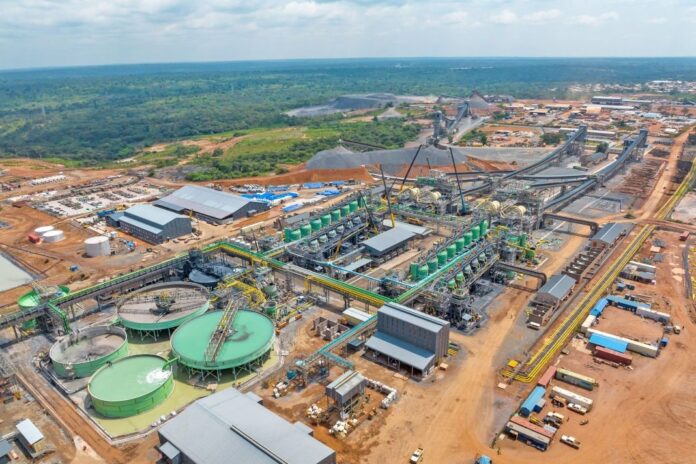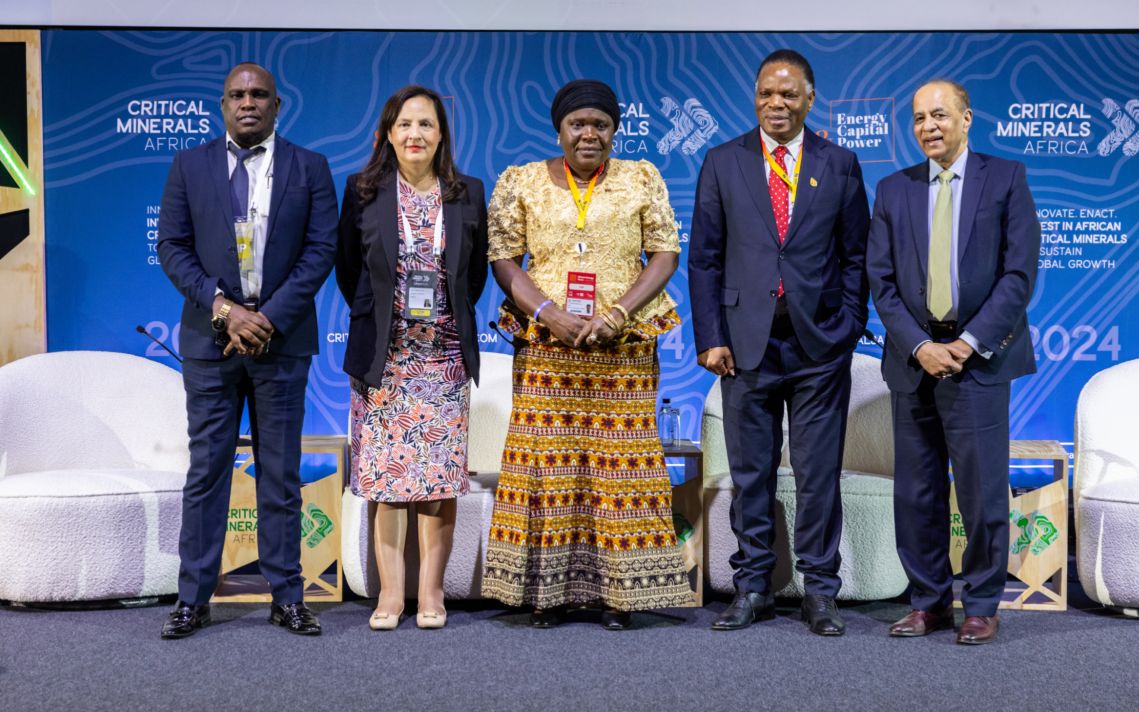
Africa holds significant reserves of minerals critical for the global energy transition. The continent boasts roughly 30% of the world’s mineral reserves, including immense deposits of cobalt, manganese, natural graphite, copper, nickel, lithium and iron ore.
The Critical Minerals Africa (CMA) 2024 Summit in Cape Town brought together industry leaders, policymakers, service providers and investors to address the urgent demands of Africa’s critical mineral value chain. The Summit featured a robust agenda that sought to shine a spotlight on opportunities for Africa to accelerate its mining sector while utilising its natural resources to promote value addition and drive socioeconomic development.
CMA 2024 featured a Ministerial Forum that included the participation of mining ministries from Eswatini, Malawi and Argentina, as well as representatives from Tanzania. High-level speakers during the forum showcased a number of projects aimed at maximising mineral production while discussing how to leverage mineral resources to promote economic growth and sustainability.
The Republic of Malawi’s Minister of Mining, Monica Chang’anamuno, highlighted several ongoing projects in the country, such as the Kasongo Initiative, which aims to increase the production of rare earth metals, graphite and lithium resources.
Meanwhile, Eswatini’s Minister of Natural Resources and Energy, Prince Lonkhokhela, announced ambitious targets to raise the contribution of the country’s mining sector to its GDP. With aims to increase the share from 1% to 50% in the short to medium term, the strategy is supported by new surveys revealing commercial deposits of lithium, copper, cobalt and other base metals.
To bolster investment in mid- and downstream infrastructure, the Summit also featured the participation of the President of the Chamber of Mines of Zimbabwe, Thomas Gono, who stated, “Historically, we exported raw materials, missing out on the potential benefits. With Africa’s young workforce, we now have an opportunity to drive revenue and create jobs through skills development and local beneficiation.”
An Investment Forum held during the Summit showcased innovative financing measures to advance the flow of capital across the African market. The session featured representatives from finance institutions, the World Bank, Absa, Moshe Capital, the African Finance Corporation and ASAFO & Co.
With the participation of Tanzania’s Chamber of Mines, it was announced that the country aims to expand exploration in critical mineral-rich basins from 16% to 50% as part of a strategic push into rare earths, lithium and tanzanite production. Meanwhile, Zambia’s Chamber of Mines discussed ongoing strategies aimed at helping the country address logistics and energy deficit challenges in the mining sector.
The Summit featured a panel discussion with high-level representatives from mining companies and development institutions including Pensana, the Africa Policy Research Institute and the US Development Finance Corporation. The panel also featured the participation of Clifford Chance, Frost & Sullivan and Chatham House and explored how regional initiatives – such as the Lobito Corridor – have the potential to fast-track the expansion of Africa’s critical-minerals market.
An Investment Forum held during the Summit showcased innovative financing measures to advance the flow of capital across the African market. The session featured representatives from finance institutions, the World Bank, Absa, Moshe Capital, the African Finance Corporation and ASAFO & Co.

Additionally, midstream and downstream opportunities were showcased during a panel session that featured the participation of organisations such as Orion Minerals, AZ Arnaturen, Women in Green Hydrogen, Isondo Precious Metals and the Southern African-German Chamber of Commerce and Industry. The panel also featured representatives from Konrad Adenauer Stiftung, the SA-DRC Chamber of Commerce, the Curtin Institute for Energy Transition, the Electric Mobility Association of Kenya and the Congolese Battery Council.
A Leaders Forum featured the participation of international mining companies Glencore DRC and KoBold Metals as well as representatives from the University of Cape Town and the Minerals Council South Africa. The Forum showcased how governments across Africa can promote innovation in the continent’s mining space to attract new investment and increase critical minerals production to drive socioeconomic and GDP growth.
Research findings
The CMA 2024 Summit brought a high degree of sharp analysis and market research to bear on factors affecting the sector on the continent.
Among the presentations on the state of play of the African market were those delivered by well-known market research firms Project Blue and Rystad Energy, as well as by several senior officials from organisations such as the World Bank.
Nils Backeberg, Founder and Director at Project Blue, stated that geopolitical shifts and the rising demand for metals essential to energy transition technologies are impacting the African market.
“Changes in government policies across countries such as Botswana, Mozambique, the US and regions in Europe will shape mineral trade and investment relations,” he noted, “underscoring the effects of global power shifts on Africa’s mineral sector.”
Backeberg pointed to US-China trade tensions and similar dynamics involving Europe and Japan as potential accelerators of investments in Africa’s supply chain, with Tanzania emerging as a focal point in the US-China competition over Southern African minerals.
The US recently announced an initiative to expand the Lobito Corridor, spanning Angola, Zambia and the Democratic Republic of Congo (DRC), to Tanzania, while China signed an agreement with Tanzania and Zambia for the TAZARA railway project.
“Africa’s geopolitical opportunities are vast, but supply chains are becoming increasingly complex,” stated Backeberg.
The electric vehicles market boom will also amplify investment in Africa’s copper, lithium and cobalt sectors, according to Backeberg, with China currently leading this demand surge, Europe advancing and the US projected to slow down due to political shifts.
The US recently announced an initiative to expand the Lobito Corridor, spanning Angola, Zambia and the Democratic Republic of Congo (DRC), to Tanzania, while China signed an agreement with Tanzania and Zambia for the TAZARA railway project.
Martin Lokanc, Senior Mining Specialist at the World Bank, discussed population growth, increased economic activities and their implications on Africa’s critical-minerals sector. He highlighted the fact that rapid urbanisation – expected to see 60% of the global population in cities by 2050 – is driving demand for critical minerals, with Africa and India at the forefront.
“Decarbonisation is a significant disruptor, prompting a reengineering of the global energy system and requiring more minerals, particularly from Africa,” Lokanc stated. He added that copper demand is projected to double by 2050, offering Africa, particularly the DRC and Zambia, a prime opportunity to expand their market share.
Lokanc also called for more local beneficiation to ensure that mining profits fuel local economies, noting that many of the world’s poorest regions overlap with high mineral concentrations.
Erik Holm Reiso, Senior Partner and Head of EMEA at Rystad Energy, emphasised Africa’s potential to address the global metals shortage, with lithium demand expected to surge by 12 times by 2050.
Wade Cherwayko, Co-founder and Director of Tronic Metals Ltd, added, “We cannot overlook African oil and gas; instead, we must harness these resources to support a stable power supply that will underpin critical mineral production and energy diversification.”











